Stigma against adopting older children leave many stuck in care system

Processing a certificate declaring a child legally available for adoption takes years to accomplish. With most Filipinos opting to adopt babies, older kids languish in the care system. Through advocacy events, a child placement agency busts the ‘myths’ about adopting children above the age of four, one parent at a time.
The expression "ampon ka lang" or "you are just an adopted child" has sadly become a casual joke within social circles or even among family members in the Philippines.
The problem is further magnified by mass media in movies and television, as they often portray these children as different from others.
Experts say that "cultural stigma" drives most Filipinos to adopt babies rather than older children, resulting in many abandoned or orphaned Filipino youth growing old without finding adoptive families.
According to a non-profit child placement agency, one of the reasons for this is the misconception that older children "have attitudes and traumas."
To address the issue, Generations Home (GH) has initiated an approach aimed at convincing parents to consider adopting children of older ages.
Jasmine Buen, the partnerships and advocacy head of GH, emphasized that raising the age preference "would help address the problem of having more children aging out" from child care institutions.
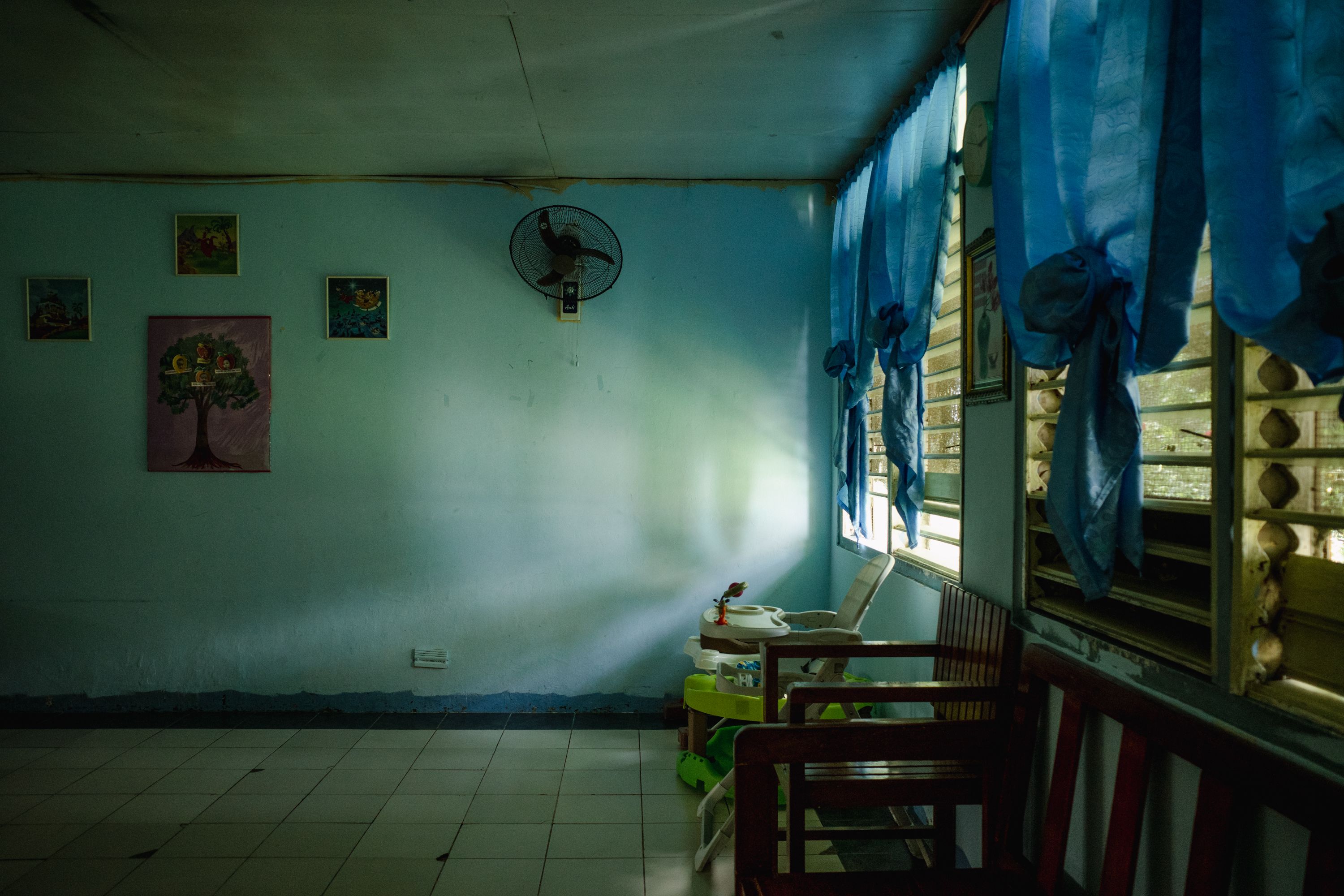
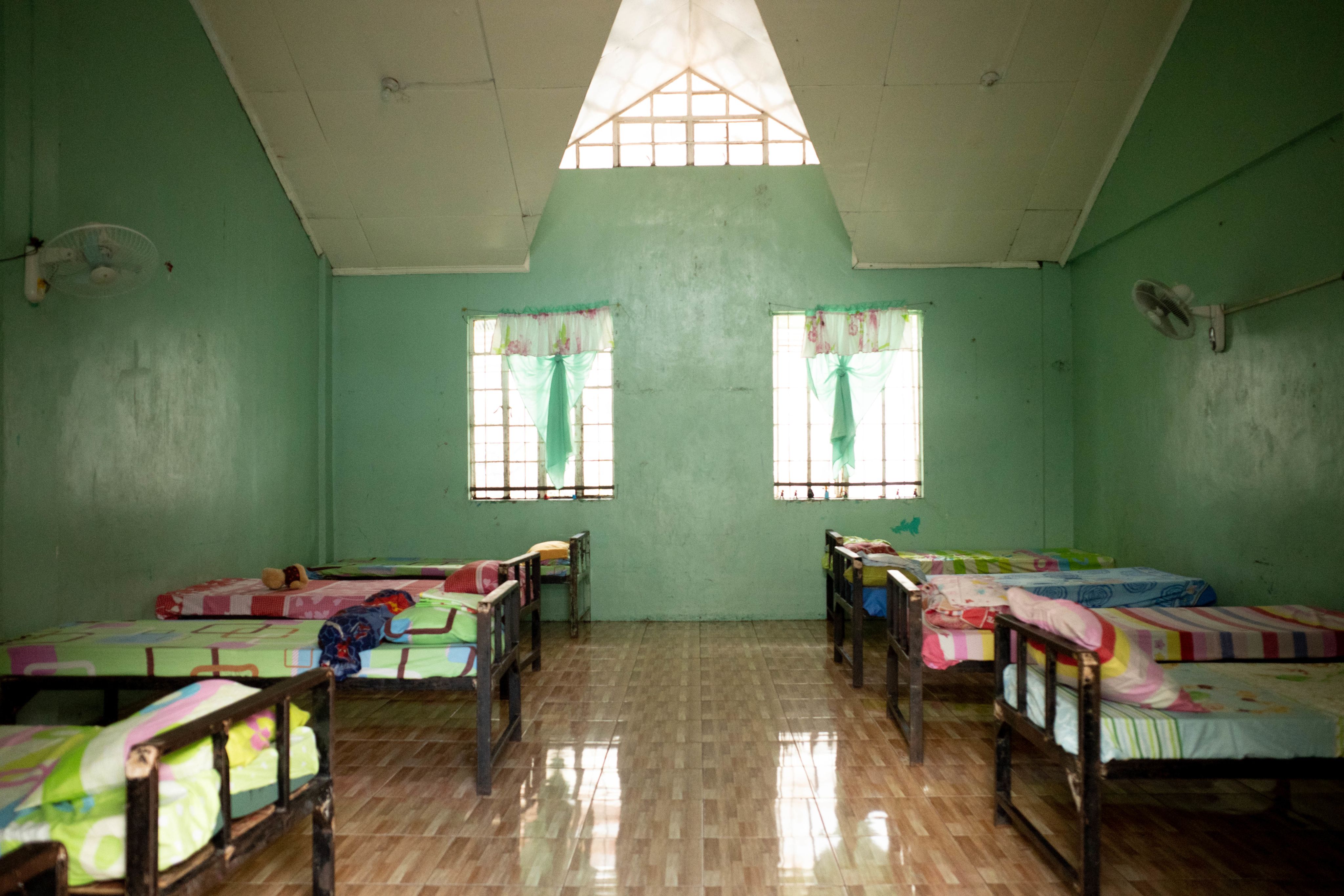
During orientations and advocacy events, GH explains to families wanting to adopt a child that there is "a window of opportunity in every stage of the child's development, which means that they can be susceptible to influences even in their adolescent years."
"Ultimately, how caregivers nurture them will manifest in the child's behavior,” she said.
Recently, GH was able to convince a couple to adopt a 4-year-old child instead of an infant in one of its “Adoption and Foster Care Forum”. In this forum, the agency helps “hesitant” families with the necessary tools and knowledge to navigate the complex journey of adoption and foster care.
GH also conducts seminars on trauma-informed care to help parents deal with the challenges of raising foster or adopted children of different ages.
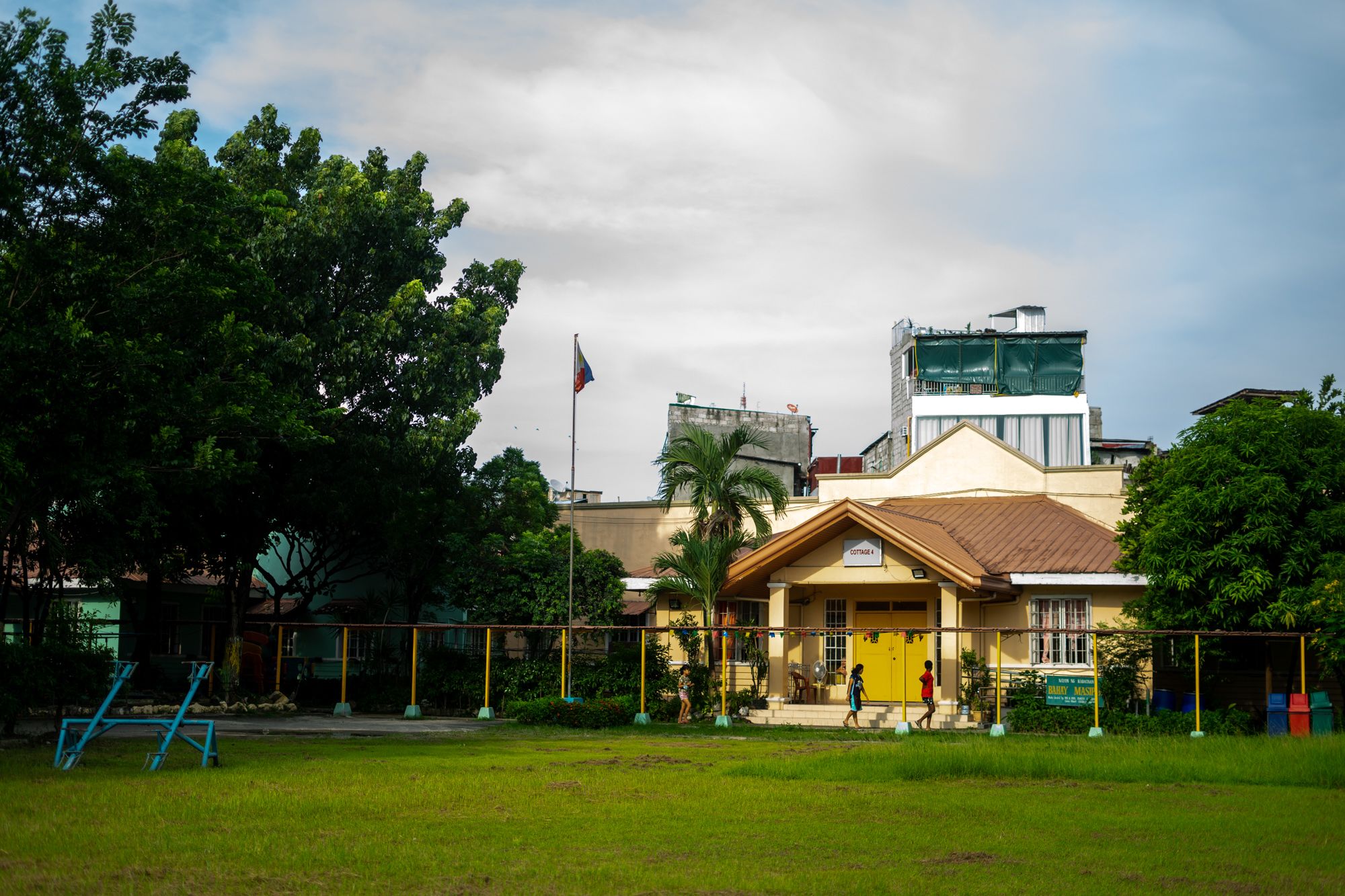
Teenagers spend time outside of their cottage in the Nayon ng Kabataan, a government-run temporary shelter facility for neglected, abandoned, abused, and orphaned children ages 6 to 17 years old in Mandaluyong City, Philippines.
Teenagers spend time outside of their cottage in the Nayon ng Kabataan, a government-run temporary shelter facility for neglected, abandoned, abused, and orphaned children ages 6 to 17 years old in Mandaluyong City, Philippines.
These “interactive session” are open not only to prospective parents but for those adoptive parents who encounter challenges and obstacles in building attachments or relationships with their adopted children.
The agency believes the decision to embark on the path of adoption, for both parents and children, is a “profound one”, which led GH to encourage adoptive parents and adopted children to build their communities.
In its website, links that lead to portals allow adoptive parents and adopted children to join in their respective communities. The community for parents is a venue “to strengthen the way we parent children who have come to us through fostering and adoption”.
Meanwhile, the “adopted and fostered community” allow adoptees to share their experiences and struggles in a safe space with people who understand them.
However, the agency is only licenced to operate in the capital region of the Philippines. To address the “adoption crisis” and the challenges surrounding the child care system in the country, more like-minded organizations must engage.
Many child rights and child welfare groups can provide support and guidance to the public regarding adoption and foster system in the country through education and information drive, just like what GH is doing. However, these campaigns require funding and government support to reach the widest possible audience.
Growing number of unadopted children
In June 2023, the Philippine Center for Investigative Journalism reported that roughly 5,875 children are living in government and private childcare facilities but “only 1369 were being processed for adoption” based on data from National Authority for Child Care (NACC) as of December 2022.
According to UNICEF, there are at least 1.8 million “abandoned or neglected” children in the country. However, GH claimed that 5 to 7 million Filipino children are “either abandoned, neglected, or orphaned”.
GH's estimate includes every child that needs help, encompassing orphans and children with parents who are incapable of providing adequate care.
“The number of children entering the care system is higher than the number of those who get adopted,” said Buen.
Majority of unadopted kids are over the age of four, but the Philippine government has no statistics on how many children have aged out without getting adopted.
One such child who waited for years to be adopted but officially aged out from the adoption system is Eric*, a 16-year-old boy who was abandoned as a newborn.
Eric was placed in foster care when he was four, but due to an abusive foster father, he was eventually brought back to the Reception and Study Center for Children (RSCC) in Quezon City.
Despite having to follow a long list of house rules at the government childcare facility, Eric felt more at home there. "People at the facility are a lot nicer than my foster family," he said.
He remained optimistic that social workers would eventually reunite him with his biological mother or find him an adoptive family before he aged out, but that day never came.
Never-ending paperwork
In the Philippines, any person below 18 years of age who has been administratively or judicially declared available for adoption is eligible for adoption.
However, securing a Certificate Declaring a Child Legally Available for Adoption (CDCLAA) could take several years to accomplish.
Buen said by the time the certificate is issued, the baby or child “has already grown older, which makes the problem much complicated because adoptive families do not want to adopt older children”.
By law, social workers are required to fulfill the requirements for the CDCLAA within three months. However, there are various hurdles throughout the procedure that can cause delays.
RSCC social worker Carol Lara said the process starts by locating the last known address to find the child's parents or relatives.
Once a family member is found, the social worker would coordinate with the local government unit (LGU) staff to accomplish a Parenting Capability Assessment Report or PCAR.
The PCAR is an exceptionally demanding task, primarily due to the varying priorities of each Local Government Unit (LGU), and the fact that certain municipalities lack sufficient funding and staff.
Lara recounted an incident when she spent five years diligently following up on an LGU worker who had been assigned to complete the PCAR.
The PCAR is a crucial evaluation to identify the family's issues and determine the best course of action, such as finding a suitable relative to care for the child or enrolling the parent in a livelihood program.
“Adoption should be the last resort,” she said.
In some cases, the parents may voluntarily sign a Deed of Voluntary Commitment (DVC) to terminate their parental rights if they have abandoned the child or shown consistent neglect or abuse.
However, even if the social worker successfully obtains the CDCLAA for the child, it does not guarantee adoption.
*Name has been changed for privacy and security purposes

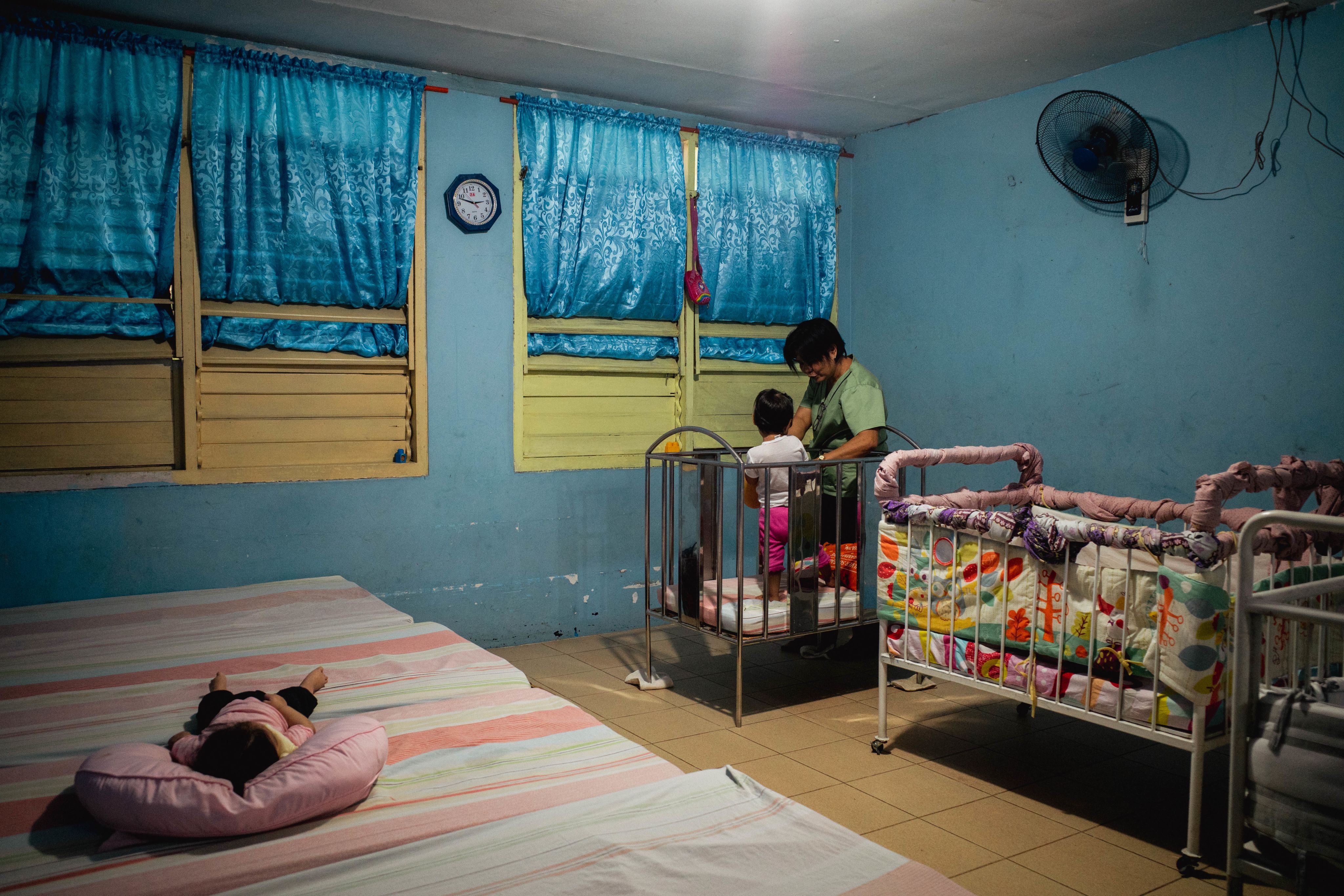

‘The institution is not the answer’
In addition to addressing the increasing number of unadopted children, Buen and her organization believe that "rescuing babies before they are abandoned and disowned" is crucial.
With a growing number of pregnant women seeking adoptive parents through social media, GH has established a page called "Tulong Kay Nanay" or "Help for Mothers.”
Through this initiative, GH supports vulnerable pregnant women in their emotional, psychological, and spiritual needs by "listening with empathy, respect, non-judgment, and understanding" to their struggles.
"We usually explain both scenarios to them: what will happen to the children if the mothers keep them or if they enter the institution," Buen said.
According to Buen, many pregnant women "would prefer to raise their children themselves, but problems like financial instability make them consider adoption."
"We approach these women on a case-to-case basis, but the goal is to ensure that they are well-equipped to keep the child," said Buen. To help pregnant women decide to keep their children, GH assists them with basic needs, such as food and grocery items.
"We also refer them to a hospital, and we have social workers and interns who search for job opportunities for these pregnant women," she added.
But there is a limit to what a child care institution can give to a child and this can have a lasting impact on the child’s development, according to Buen.
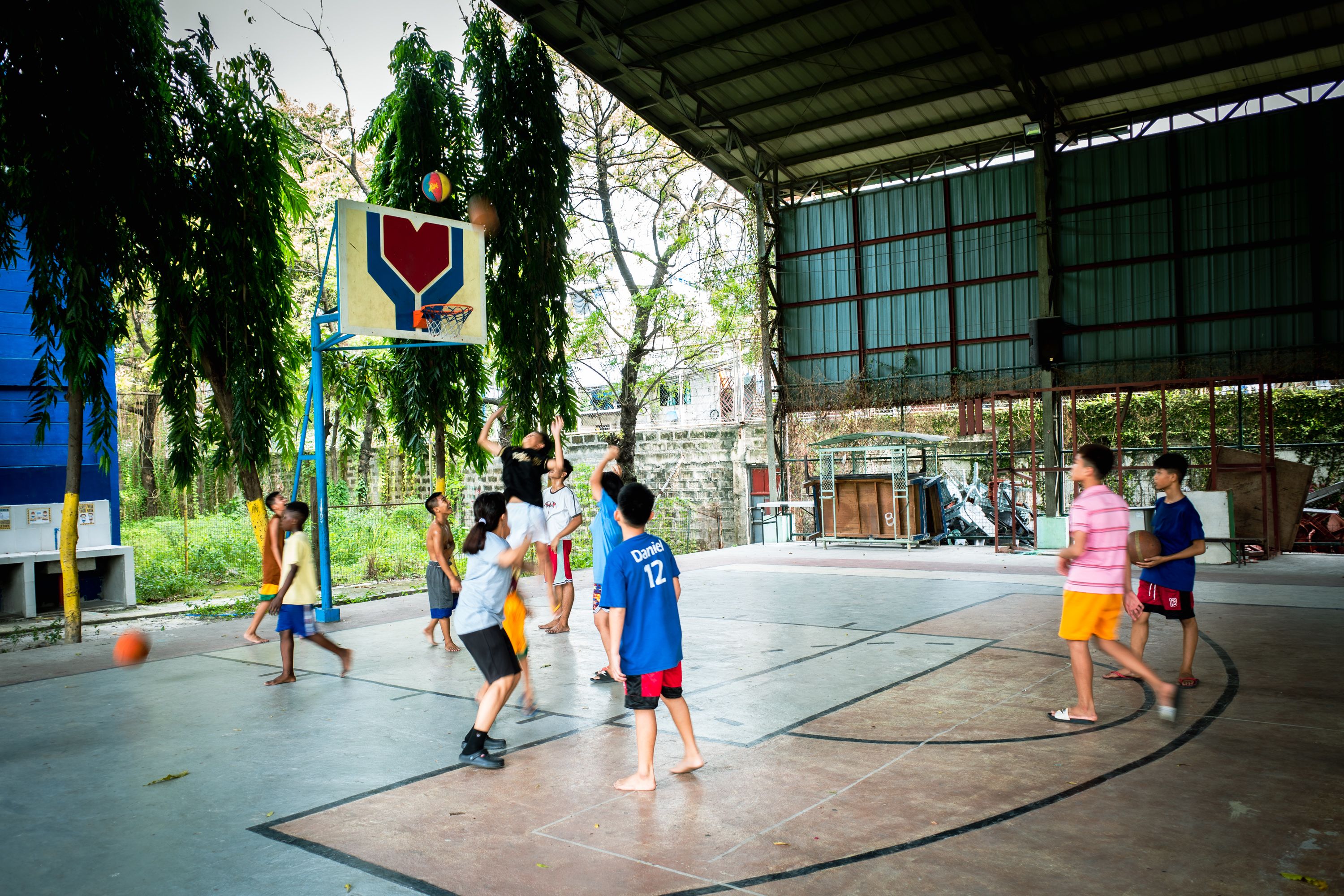
Children and teenagers play at the Nayon ng Kabataan’s basketball court on July 27, 2022.
Children and teenagers play at the Nayon ng Kabataan’s basketball court on July 27, 2022.
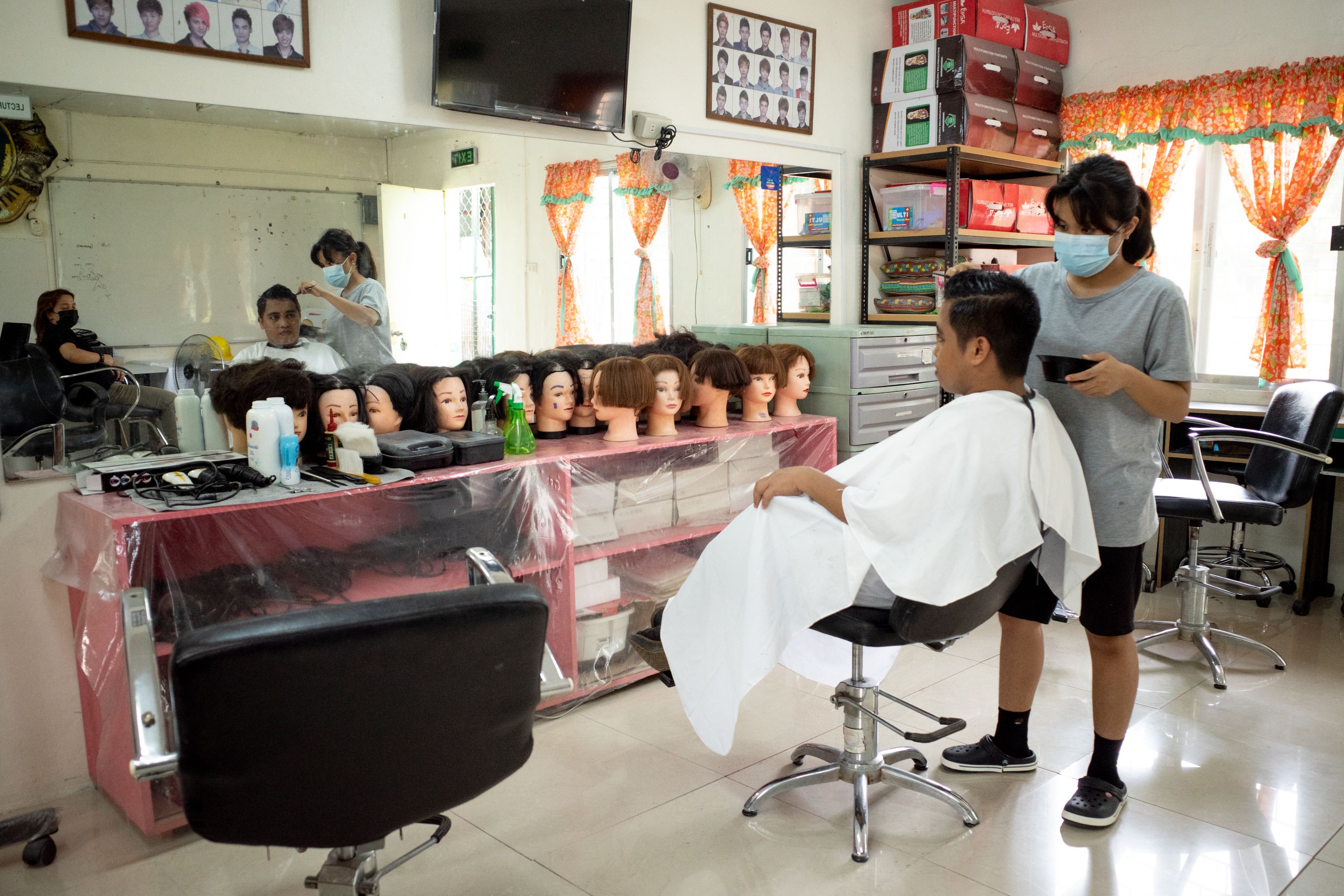
Anna, whose name is changed for protection, applies hot oil to her haircutting instructor’s hair at Nayon ng Kabataan’s livelihood training center. She was 17 yeard at the time this photograph was taken in July 27, 2022.
Anna, whose name is changed for protection, applies hot oil to her haircutting instructor’s hair at Nayon ng Kabataan’s livelihood training center. She was 17 yeard at the time this photograph was taken in July 27, 2022.
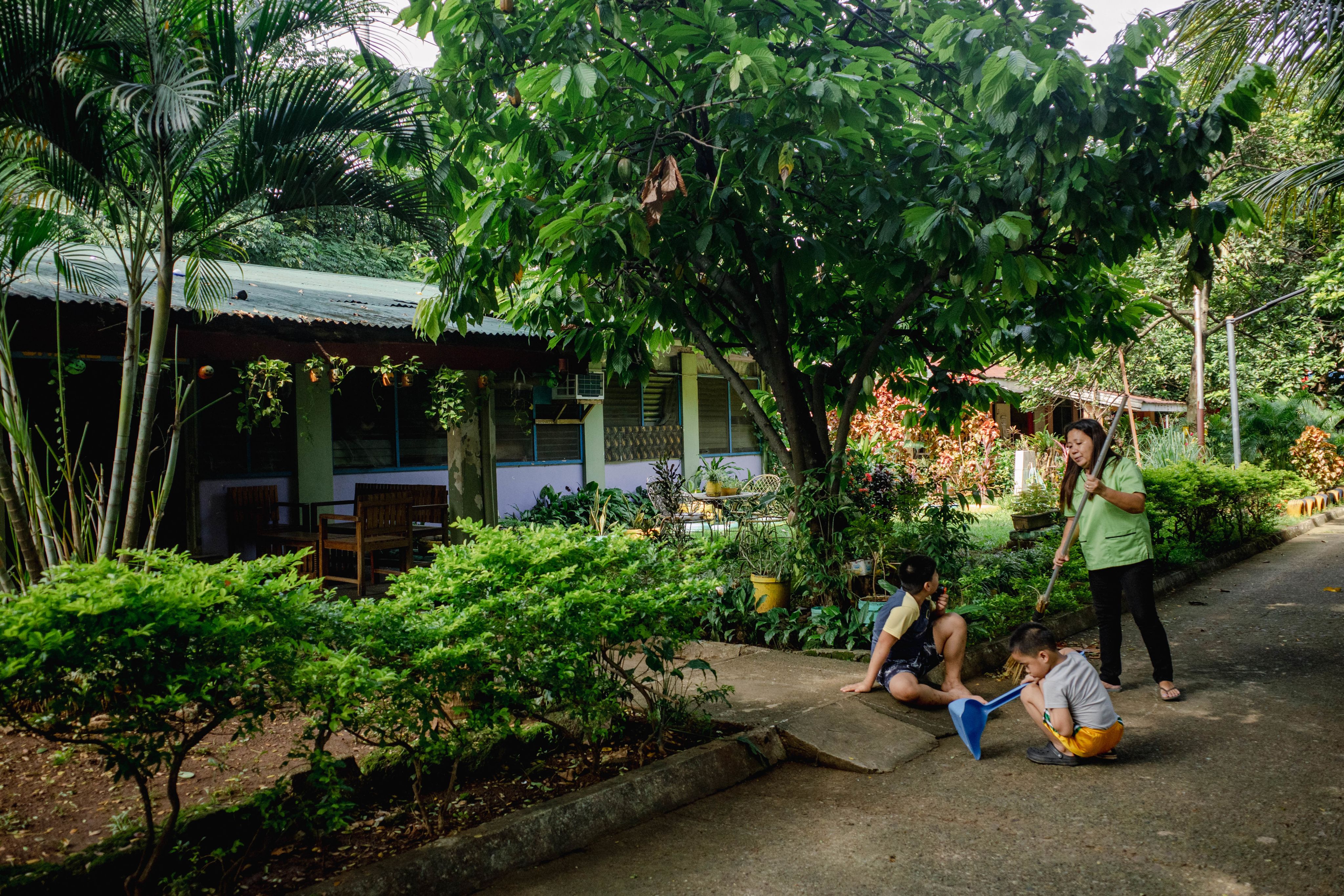
Children spend time outside the boy’s cottage while a social worker sweep the leaves to the side of the pavement at the Reception and Study Center for Children. Eric, now 16 years old, say that he treats everyone at the facility like family.
Children spend time outside the boy’s cottage while a social worker sweep the leaves to the side of the pavement at the Reception and Study Center for Children. Eric, now 16 years old, say that he treats everyone at the facility like family.
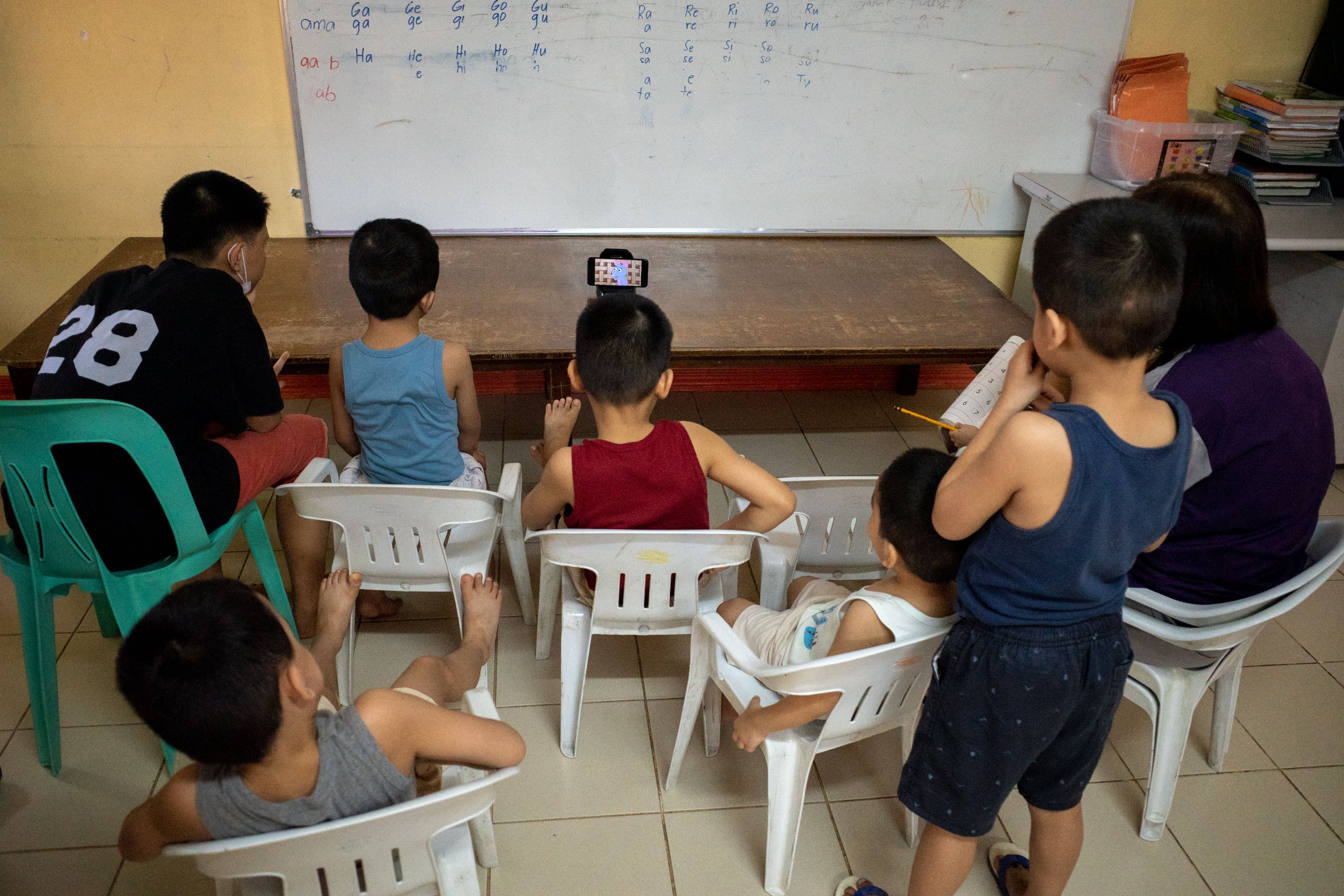
Boys watch a cartoon show on a smart phone with their social worker in the boy’s cottage the Reception and Study Center for Children in Quezon City.
Boys watch a cartoon show on a smart phone with their social worker in the boy’s cottage the Reception and Study Center for Children in Quezon City.
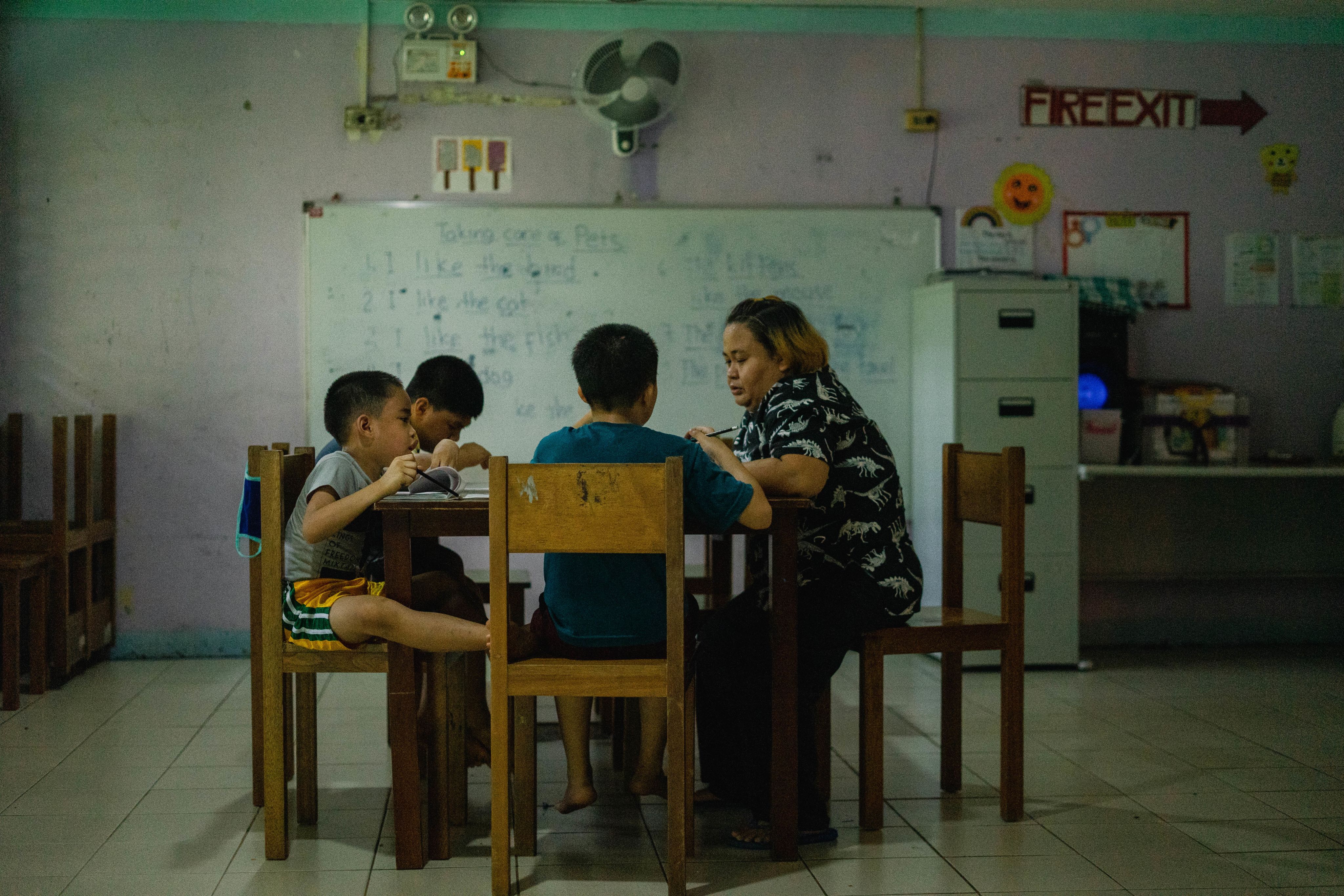
A teacher hired by the Reception And Study Center For Children teaches a group of boys how to spell and write in English. Situated in Quezon City, Metro Manila, Philippines, RSCC houses children in need of special protection ages 0 to 6.
A teacher hired by the Reception And Study Center For Children teaches a group of boys how to spell and write in English. Situated in Quezon City, Metro Manila, Philippines, RSCC houses children in need of special protection ages 0 to 6.
“While childcare facilities are important and many of them treat children like their own and provide adequate food and quality education, they are not a replacement for a family life,” she said.
Buen acknowledged that life inside an institution is far from normal.
"Just imagine, these kids have to fill out forms just to get soap."
She also expressed that the most heartbreaking aspect of children living in such institutions is "the loss of trust in their parents" and other individuals they once spent time with but who eventually left.
“Trust can only be built with long-term relationships and that’s what adoptive parents can offer. A child care institution should only serve as a temporary shelter,” she said.
Trix Clasara, an adoptive mother of a 2-year-old child, acknowledged that the journey of adopting a toddler was challenging. “But rearing your children is even more challenging,” she said.
To encourage other families to adopt abandoned and orphaned children, Clasara shares her experiences to other parents and families through various social media platforms.
From the struggles in the adoption process to the challenges of nurturing a child, she provides pieces of advice and insights.
“Relationships take time to grow. That’s why I’m sharing my experience online so that other adoptive parents can learn from it,” she said.
There are various groups and communities of adoptive parents on different social media platforms. While some parents are actively sharing their experiences and providing pieces of advice to others, many adoptive parents are still hesitant to open up.
Child rights advocates agree that a "whole-of-nation approach" is needed to address the adoption crisis in the Philippines. The government must enact measures that aim to expedite the adoption process and fund more child care institutions across the country.
The State must institutionalize support and guidance, not only for prospective adoptive parents or families willing to take in neglected, abandoned, and orphaned children but also for women and families who are compelled to surrender their children into the adoption system due to poverty.
Pursuit of Belongingness
Eric has moved to Parangap Foundation, a facility in Manila that offers support to “children in need” until they finish college.
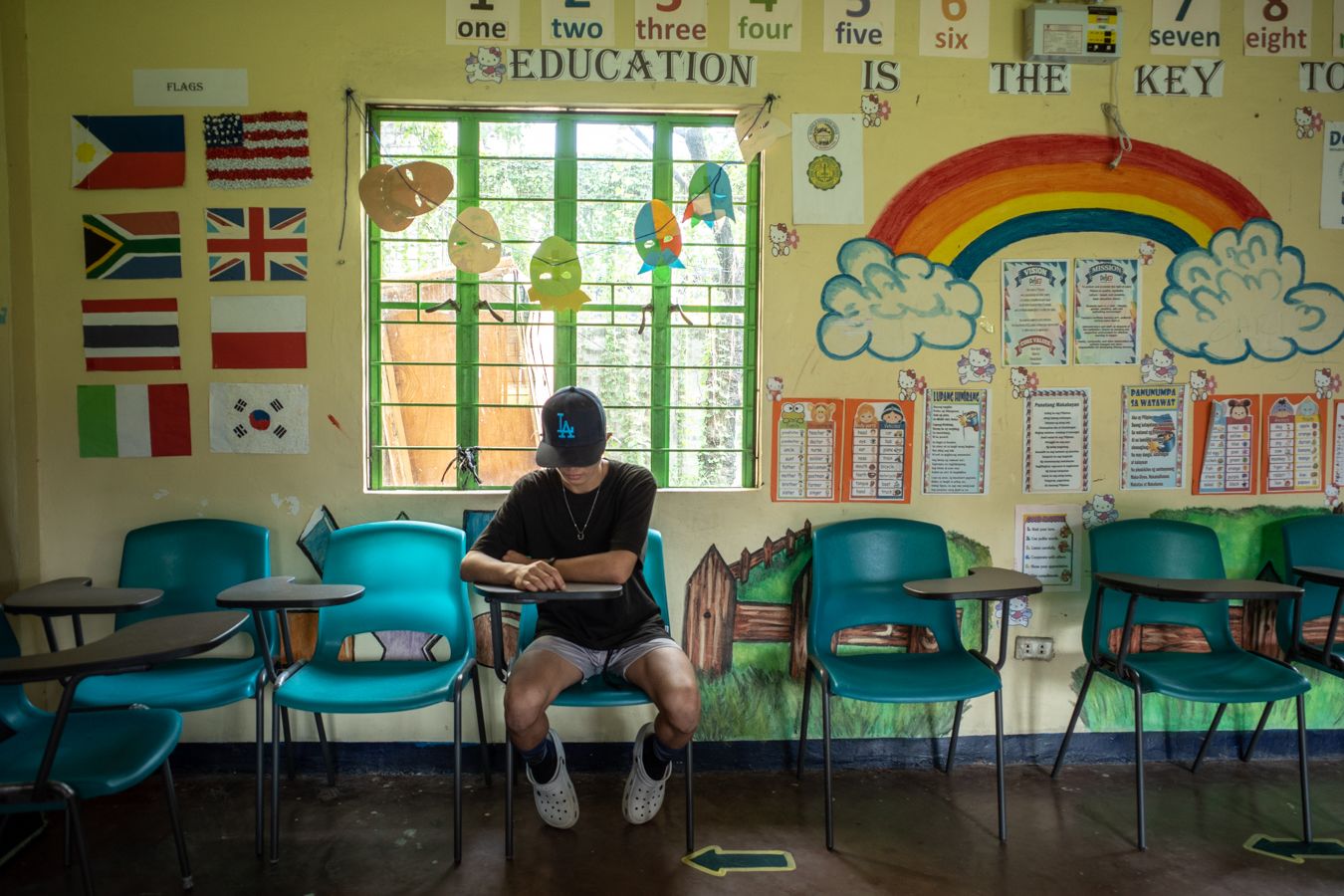
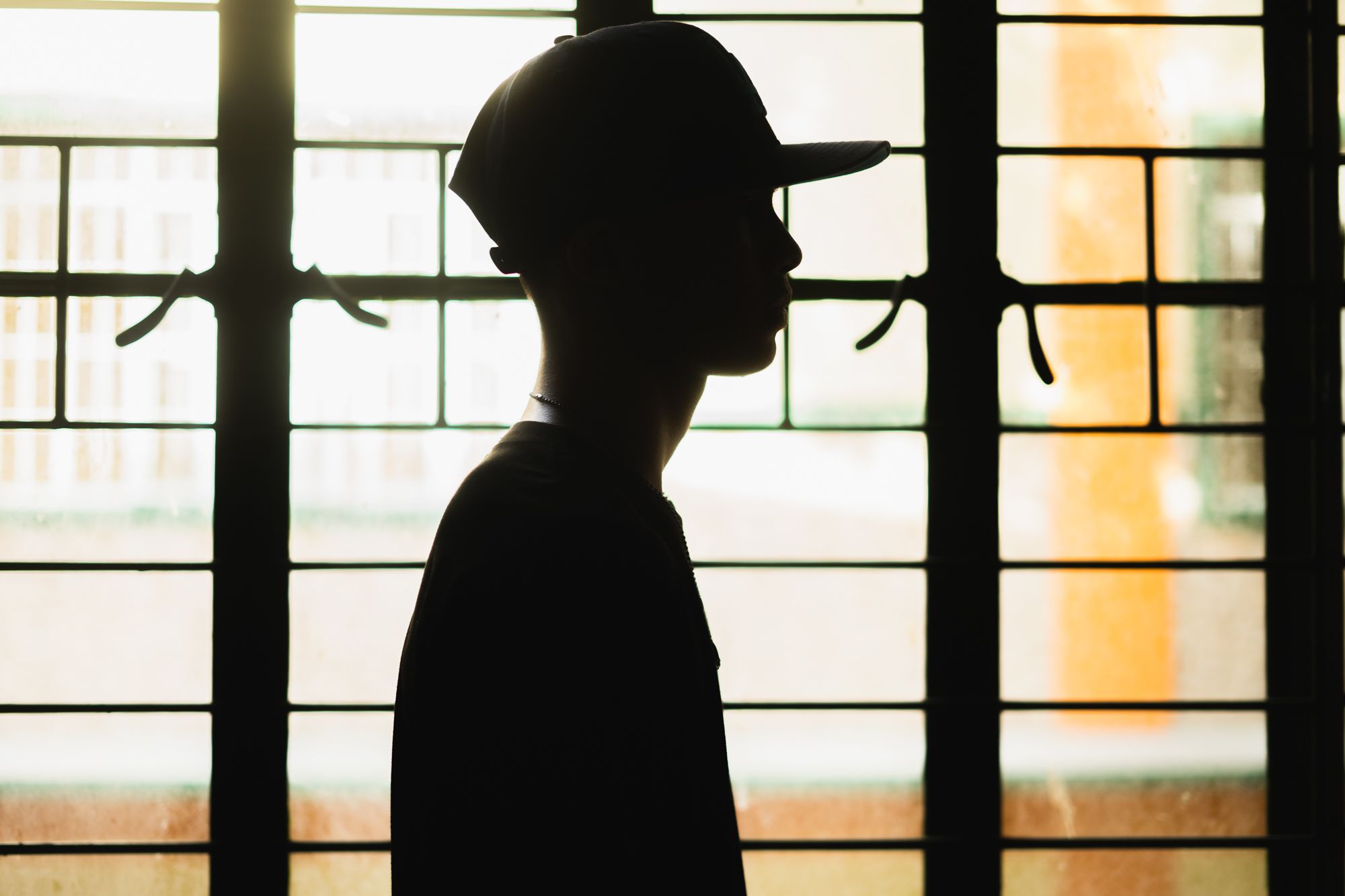
"I started contemplating my future when I turned 14. I knew that obtaining a college degree was the only way to achieve all my dreams," he said.
Despite facing neglect and abandonment, Eric's determination to find his biological mother remains unwavering.
"If I find her, I will bring her home and take care of her. I will do everything to make up for the time that we spent apart."
He might never find the adoptive family that he and the social workers have been searching for him but he is confident in his ability to build a home and a family.
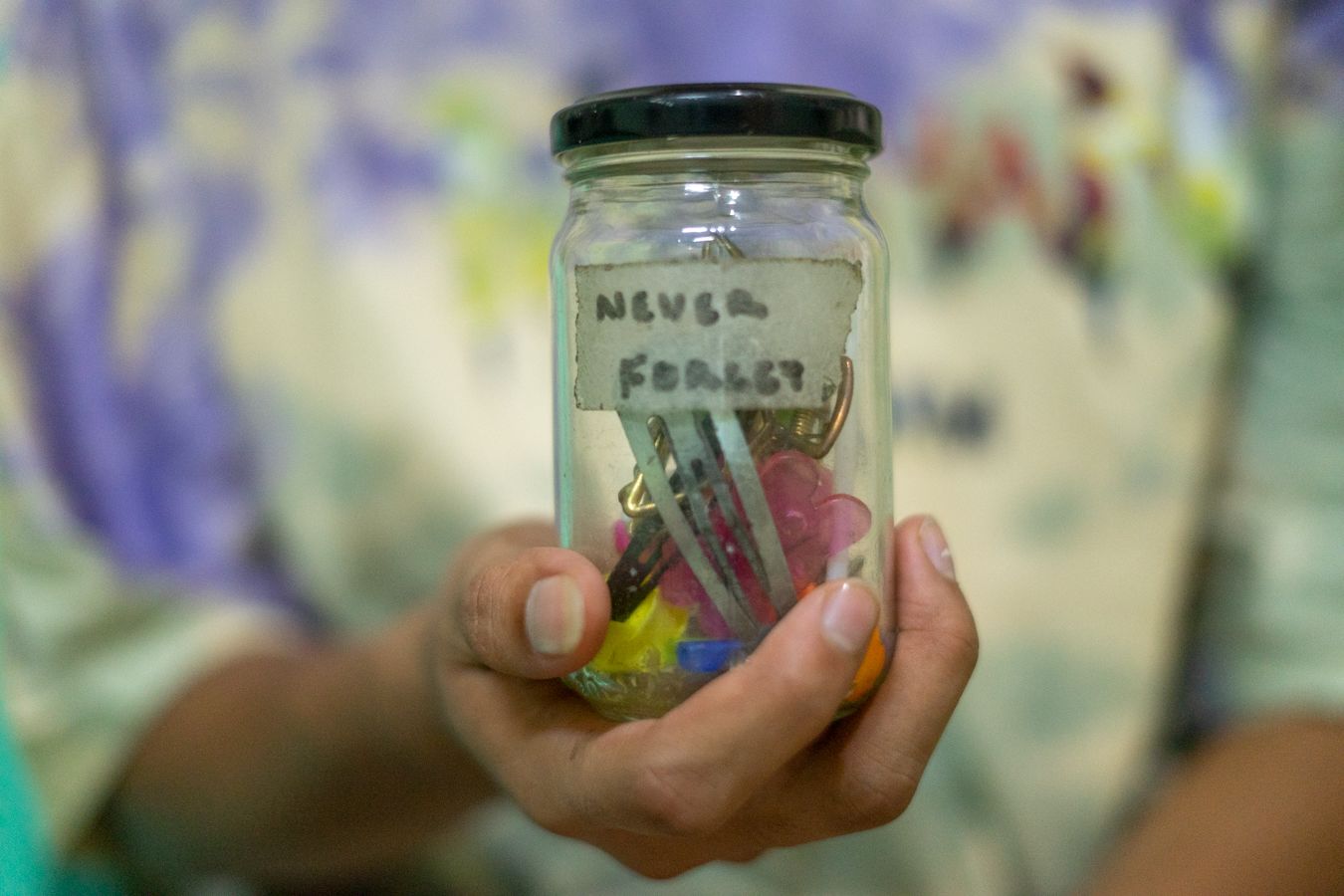
Before he moved to Pangarap Foundation, 16-year-old Eric asked his friends at Nayon ng Kabataan to give him trinkets that he could bring with him. According to his dossier, he was surrendered by his mother to the nuns who brought him to a government facility when he was a baby.
Before he moved to Pangarap Foundation, 16-year-old Eric asked his friends at Nayon ng Kabataan to give him trinkets that he could bring with him. According to his dossier, he was surrendered by his mother to the nuns who brought him to a government facility when he was a baby.
*Name has been changed for privacy and security purposes
This story was produced in partnership with the Pulitzer Center
With generous support from
Aid to the Church in Need
Dreikönigsaktion
missio Aachen
Text and photos by Bernice V. Beltran
Produced by June Nattha Nuchsuwan
Published August 2, 2023
© Copyright MMXXIII LiCAS.news
